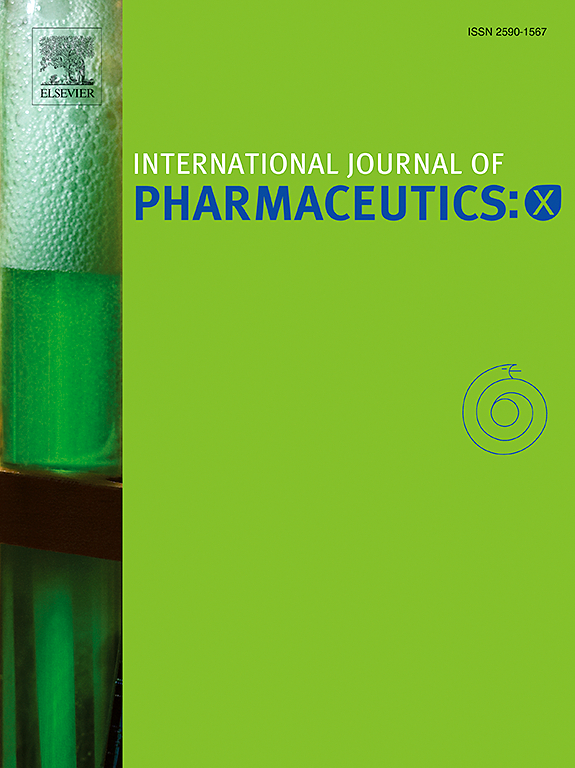Cell membrane-camouflaged nanomedicines for enhanced thrombolysis and blood-brain barrier penetration in ischemic stroke therapy
IF 6.4
2区 医学
Q1 PHARMACOLOGY & PHARMACY
引用次数: 0
Abstract
Thrombus-induced ischemic stroke (IS) remains a serious threat a serious health threat with limited therapeutic efficacy due to the dual challenges of precise thrombus targeting and restricted blood-brain barrier (BBB) penetration. While conventional nanocarriers, such as liposomes, micelles, and polymeric nanoparticles (NPs), demonstrate clinical potential due to their mature preparation protocols, their application is limited by poor targeting accuracy, inadequate biocompatibility, and rapid systemic clearance. In response, microenvironment-responsive biomimetic drug delivery systems based on cell membrane-camouflaged nanomedicines (CM-NMs) have emerged as a promising strategy, leveraging the pathological features of ischemic lesions for enhanced targeting and treatment. CM-NMs stand out by utilizing cell membranes to preserve innate targeting and/or BBB penetration capabilities. This approach also ensures high biocompatibility and minimizes the risk of immune clearance. This review highlights recent advances in CM-NMs for IS treatment, critically discussing three key approaches: (1) platelet membrane-camouflaged nanomedicines (PLM-NMs), which mimic platelet adhesion for thrombus-specific accumulation, (2) immune cell membrane NMs and stem cell membrane NMs, which leverage inflammatory tropism or homing mechanisms for enhanced BBB penetration, and (3) hybrid membrane NMs, which enable multi-targeting capabilities. Furthermore, we discuss ongoing challenges and clinical translation potential of CM-NMs to provide guidance for next-generation CM-NMs.
在缺血性脑卒中治疗中增强溶栓和血脑屏障穿透的细胞膜伪装纳米药物
血栓诱导的缺血性卒中(IS)仍然是一个严重的健康威胁,由于血栓精确靶向和血脑屏障(BBB)穿透受限的双重挑战,治疗效果有限。虽然传统的纳米载体,如脂质体、胶束和聚合物纳米颗粒(NPs),由于其成熟的制备方案而显示出临床潜力,但它们的应用受到靶向准确性差、生物相容性不足和快速全身清除的限制。因此,基于细胞膜伪装纳米药物(CM-NMs)的微环境响应仿生药物递送系统已经成为一种有前途的策略,利用缺血性病变的病理特征来增强靶向和治疗。CM-NMs通过利用细胞膜来保持固有的靶向和/或血脑屏障穿透能力而脱颖而出。这种方法还确保了高生物相容性,并将免疫清除的风险降至最低。本文综述了CM-NMs治疗IS的最新进展,并重点讨论了三种关键方法:(1)血小板膜伪装纳米药物(PLM-NMs),它模拟血小板粘附形成血栓特异性积累;(2)免疫细胞膜NMs和干细胞膜NMs,利用炎症趋向性或归巢机制增强血脑屏障渗透;(3)混合膜NMs,它具有多靶向能力。此外,我们讨论了CM-NMs正在面临的挑战和临床转化潜力,为下一代CM-NMs提供指导。
本文章由计算机程序翻译,如有差异,请以英文原文为准。
求助全文
约1分钟内获得全文
求助全文
来源期刊

International Journal of Pharmaceutics: X
Pharmacology, Toxicology and Pharmaceutics-Pharmaceutical Science
CiteScore
6.60
自引率
0.00%
发文量
32
审稿时长
24 days
期刊介绍:
International Journal of Pharmaceutics: X offers authors with high-quality research who want to publish in a gold open access journal the opportunity to make their work immediately, permanently, and freely accessible.
International Journal of Pharmaceutics: X authors will pay an article publishing charge (APC), have a choice of license options, and retain copyright. Please check the APC here. The journal is indexed in SCOPUS, PUBMED, PMC and DOAJ.
The International Journal of Pharmaceutics is the second most cited journal in the "Pharmacy & Pharmacology" category out of 358 journals, being the true home for pharmaceutical scientists concerned with the physical, chemical and biological properties of devices and delivery systems for drugs, vaccines and biologicals, including their design, manufacture and evaluation. This includes evaluation of the properties of drugs, excipients such as surfactants and polymers and novel materials. The journal has special sections on pharmaceutical nanotechnology and personalized medicines, and publishes research papers, reviews, commentaries and letters to the editor as well as special issues.
 求助内容:
求助内容: 应助结果提醒方式:
应助结果提醒方式:


